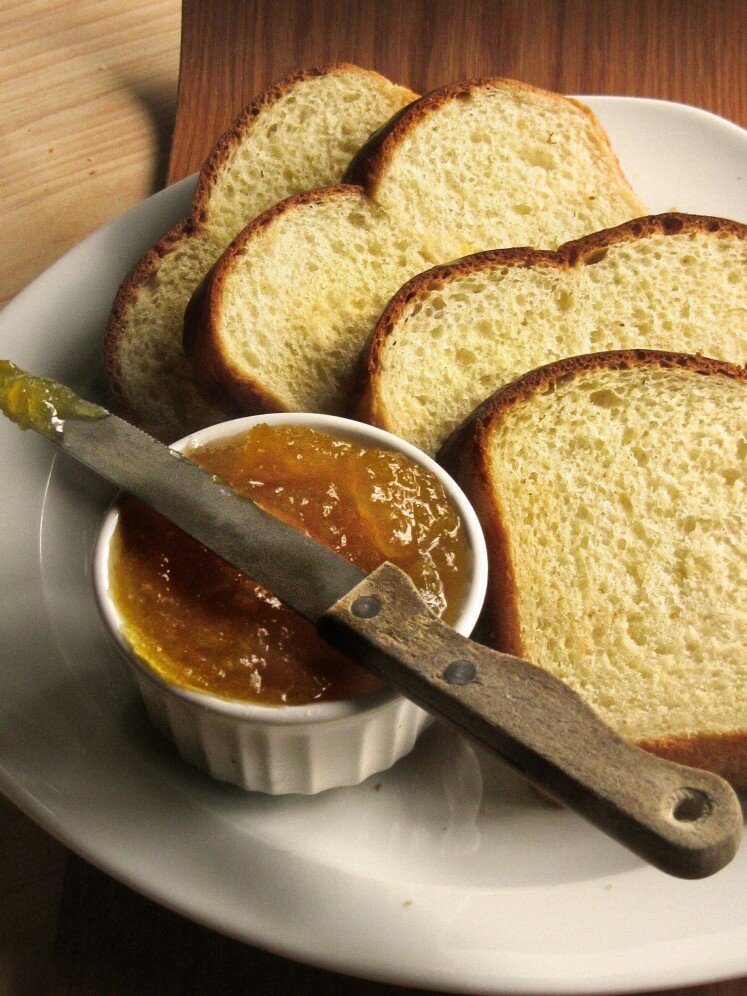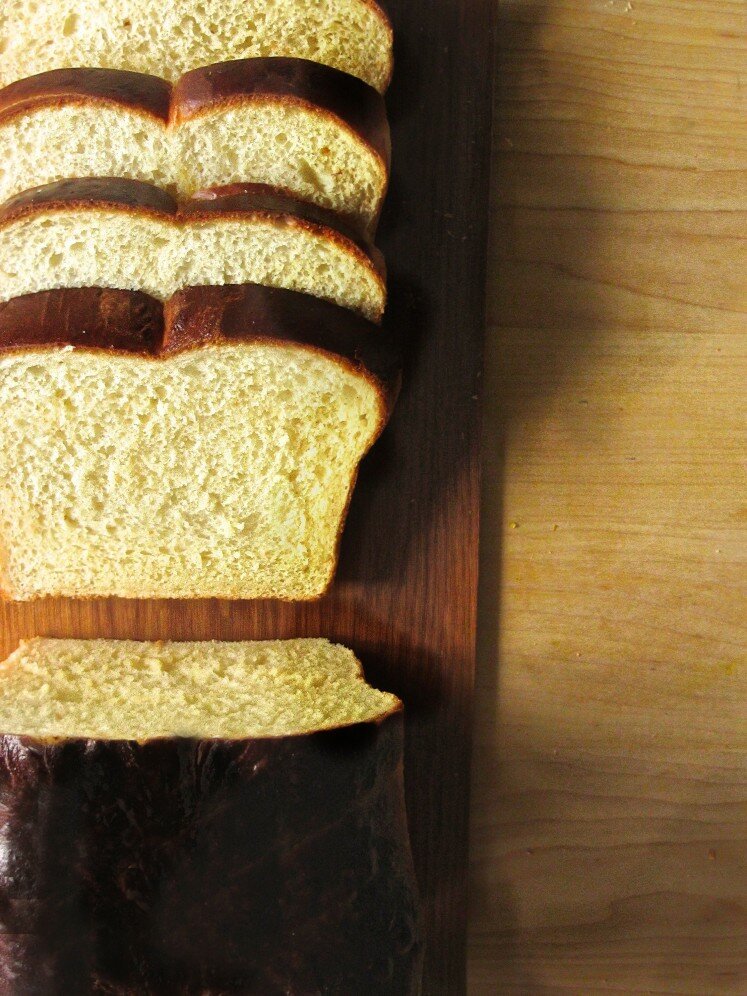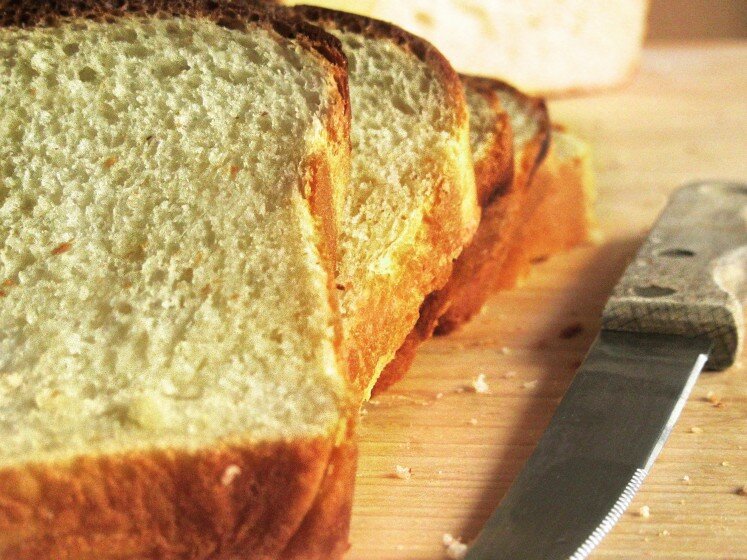Brioche Recipe

Yeast. It’s very simple to work with. It is a living organism and it needs to be cared for is all.
The first mistake most people make is by not proofing the yeast beforehand to make sure it is still active and alive. By stirring the measured yeast in warm water and a pinch or so of sugar, you get the little guys moving. If they are still alive the water will get foamy and the yeast will clump. If this doesn’t happen, their dead. Have a funeral if you must, but you’ll need new yeast for your recipe. Otherwise you,ll end up with a brick, not bread.
The second mistake most people make is by proofing the yeast in water that is too warm. Yeast starts to die at 120 degrees Fahrenheit and the suckers completely bite the dirt at 140 degrees Fahrenheit. So, to be safe, proof them in water at 90 degrees or so. Don’t kill them, then they won’t be much help.
This recipe is great. The enriched bread is perfect for many things, and I’ll be publishing other recipes based off this one throughout the week. This recipe begins with a Starter that you prepare ahead of time, which will then will be used in the final dough preparation. We have to start somewhere though so I’ll stop rambling so you can get to the recipe already.
Brioche
Ingredients:
- 1 3/4 cup All-Purpouse Flour
- 1 cup of warm water, 80 degrees F
- 1 tsp Active Dry Yeast
Brioche Dough:
- 2 1/2 cups Bread Flour
- 1 1/2 cups All-Purpouse Flour
- 1 3/4 tsp salt
- 1/4 cup sugar
- 1 3/4 tsp Active Dry Yeast
- The Prepared Starter
- 2/3 cup Whole Milk
- 5 Large Eggs
- 1 cup (2 sticks) Unsalted Butter
Egg Wash:
- 2 egg yolks
- 1 tsp milk
Preparing the Starter:
- Mix all of the starter ingredients in a bowl.
- Cover with plastic wrap and let stand at room temp for 3- 3 1/2 hours, or in the refrigerator overnight.
*You can test to see if it is ready for the final dough by dropping a small amount of it in a cup of water. If it floats, you are ready to proceed to the next step.
Brioche Dough:
- About 35 minutes before you are ready to start mixing the final dough, pull the unsalted butter out of the refrigerator and set on the counter at room temp. This brings the butter to a workable consistency without being too warm. The goal here is for the butter to be the same consistency as the brioche dough you are adding it to.
- Attach the dough hook to your stand mixer. Place the flours, salt, sugar, and yeast into your mixer bowl. stir to combine these dry ingredients.
- Now, add your prepared starter, milk, and eggs. Mix on low speed until combined, approx. 5 min., scraping the sides of the bowl with a rubber spatula half way through.
- When combined, let the dough rest in your mixer bowl for 18 min, to let it relax.
- Once the dough has rested, mix on medium speed for approx. 9 min, or until the dough releases from the sides of the bowl. This indicates proper gluten development for your next step.
- With your mixer on medium low, begin adding the unsalted butter, 1 Tablespoon at a time. Incorporating each tablespoon before adding the next. Be patient. You want the butter to be fully incorporated to obtain the proper texture. The dough needs to be silky smooth, with no bits of butter visible.
- Transfer the dough to a large buttered bowl and cover. Allow to ferment at room temperature (70 degrees F) for 2 hours, punching down the dough once halfway through. ALTERNATIVELY: You can place your covered dough in the refrigerator overnight to ferment. * If you choose the two-hour same day fermentation be sure the dough doesn’t get much above 70 degrees F. The butter in your will melt, causing a greasy texture to your final product.
- After fermentation, prepare two 8 inch loaf pans by coating the insides with butter. Scrape your dough out of the bowl onto a floured work surface.
- Cut dough in half and flatten each half into an 8inch by 12 in. rectangle.
- Roll each rectangle from 8″ side to 8″side and pinching the seams. Tuck ends under and place in loaf pans.
- Allow dough to rise in a room temperature, draft free space for 2 hours.
- Preheat oven to 425 degrees F.
- Make the egg wash by whisking together the eggs and milk in a small bowl. Use the egg wash to brush the tops of each loaf.
- Bake until the loaves are amber brown and sound hollow when tapped, 30-35 min.
- Unmold and cool on a wire rack.
- Enjoy!
*The leftover Brioche can be used for bread pudding, french toast, or croutons. (recipes coming soon)




